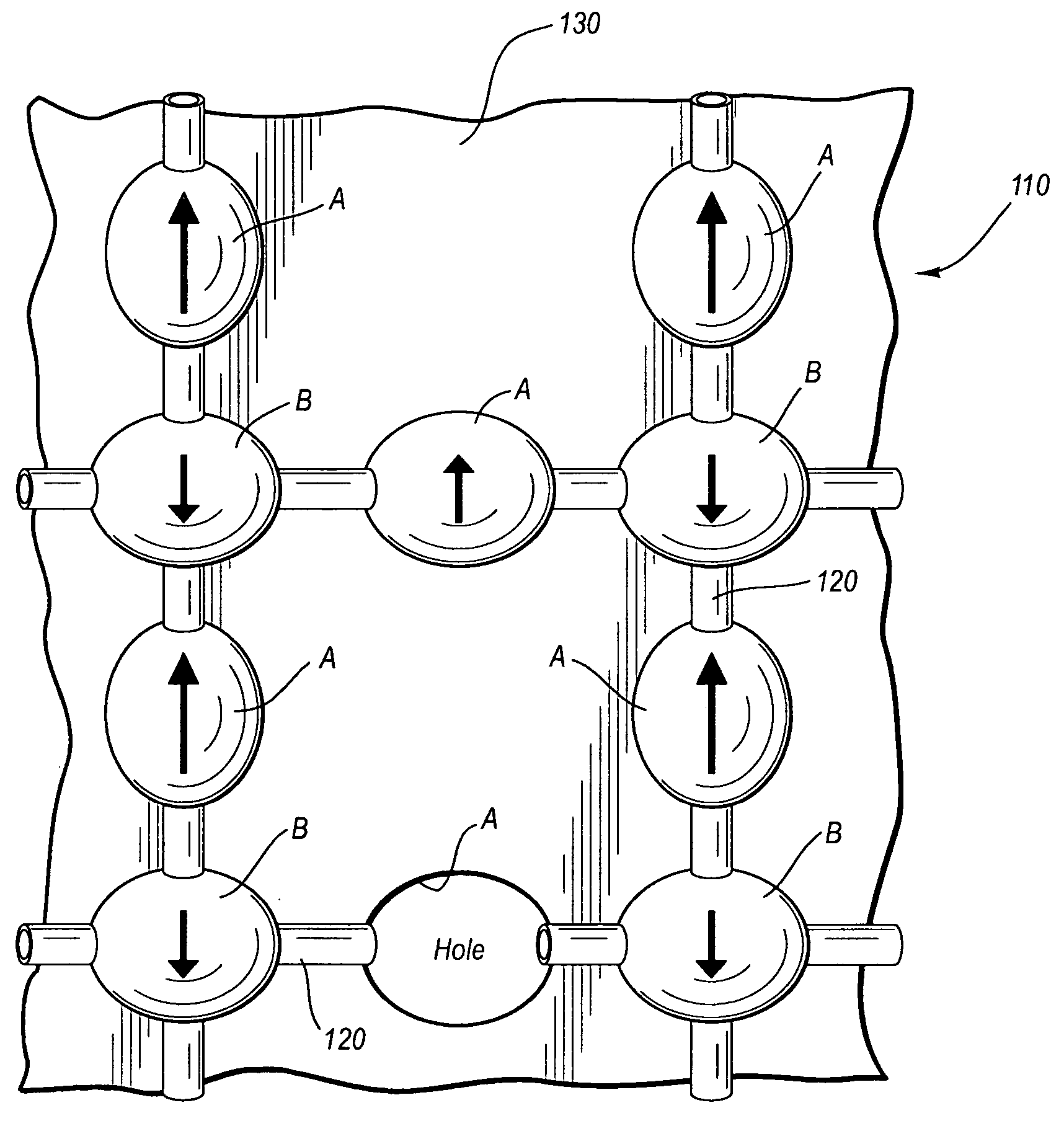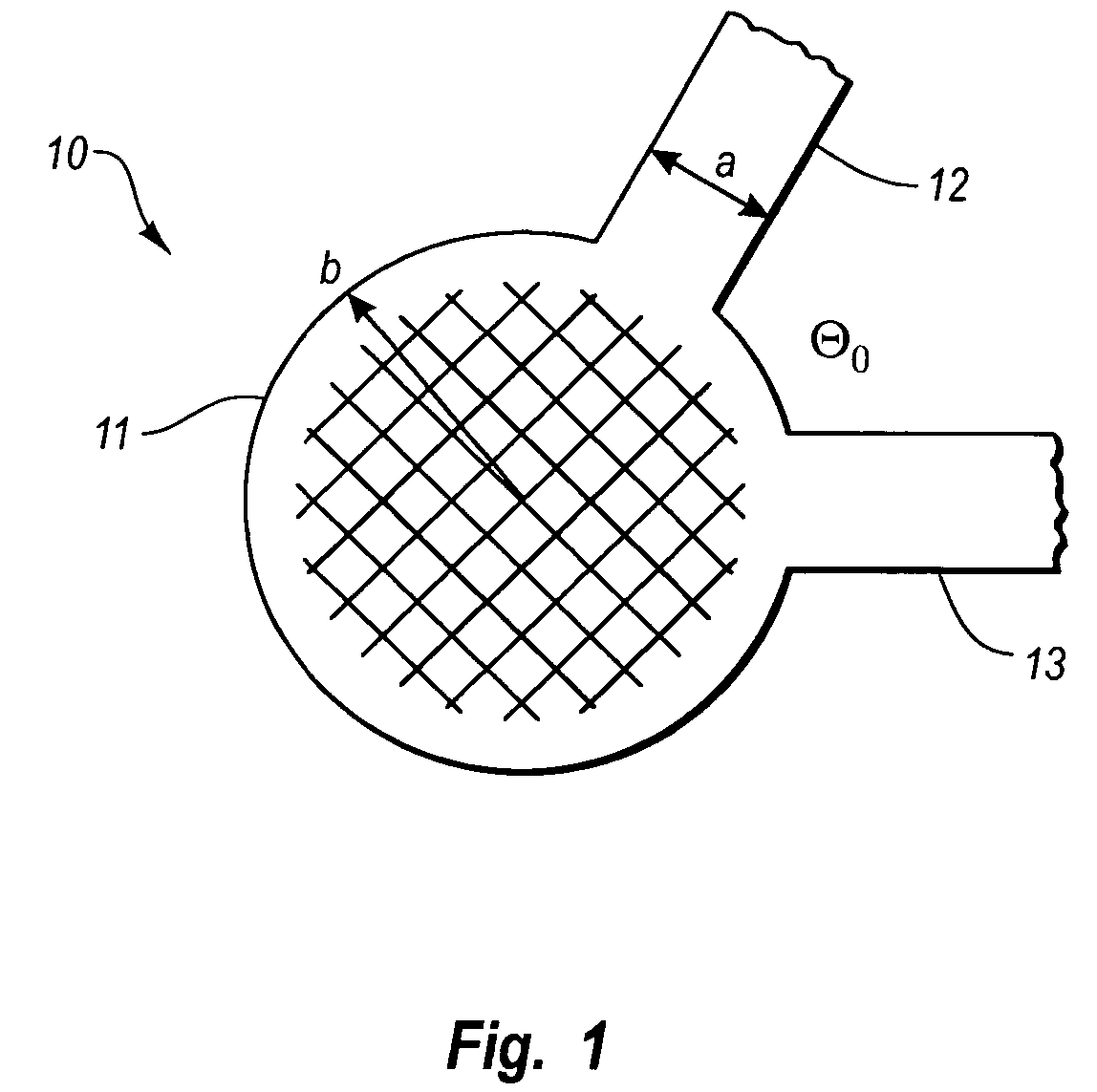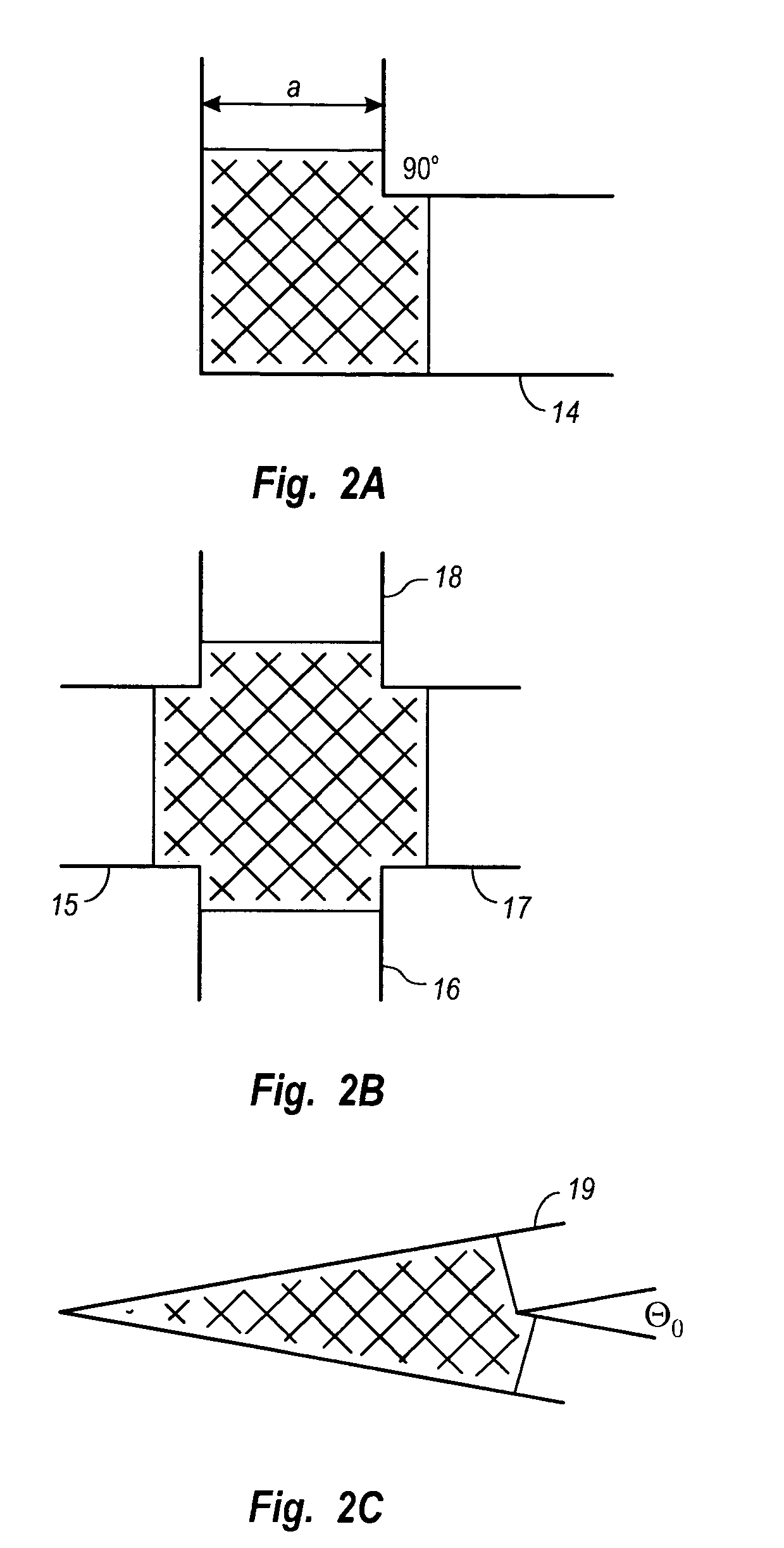Manipulation of conductive and magnetic phases in an electron trapping semiconducting
a technology of semiconducting and magnetic phase, applied in the field of semiconducting strip array, can solve the problems of complex simulation of hubbard and t-j models, difficult miniaturization of the setup, and complete disagreement and confusion in the physics community regarding the precise mechanism and the exact model parameters
- Summary
- Abstract
- Description
- Claims
- Application Information
AI Technical Summary
Benefits of technology
Problems solved by technology
Method used
Image
Examples
Embodiment Construction
[0039] Reference will now be made to figures wherein like structures will be provided with like reference designations. It is understood that the drawings are diagrammatic and schematic representations of exemplary embodiments of the invention, and are not limiting of the present invention nor are they necessarily drawn to scale.
[0040] The present invention uses a recently discovered property of particles in narrow spaces as the building block in a new concept for the creation of synthetic structures to make artificial atoms and molecules. The terms “particle” or “particles” used herein refers to subatomic particles such as electrons, photons, excitons, phonons, and the like.
[0041] The present invention applies techniques for particle localization by geometrical nanostructures that allow for the production of artificial atoms, and from them, small or large molecules and arrays suitable for use in electronic devices. While the present invention uses procedures based on currently av...
PUM
 Login to View More
Login to View More Abstract
Description
Claims
Application Information
 Login to View More
Login to View More - R&D
- Intellectual Property
- Life Sciences
- Materials
- Tech Scout
- Unparalleled Data Quality
- Higher Quality Content
- 60% Fewer Hallucinations
Browse by: Latest US Patents, China's latest patents, Technical Efficacy Thesaurus, Application Domain, Technology Topic, Popular Technical Reports.
© 2025 PatSnap. All rights reserved.Legal|Privacy policy|Modern Slavery Act Transparency Statement|Sitemap|About US| Contact US: help@patsnap.com



